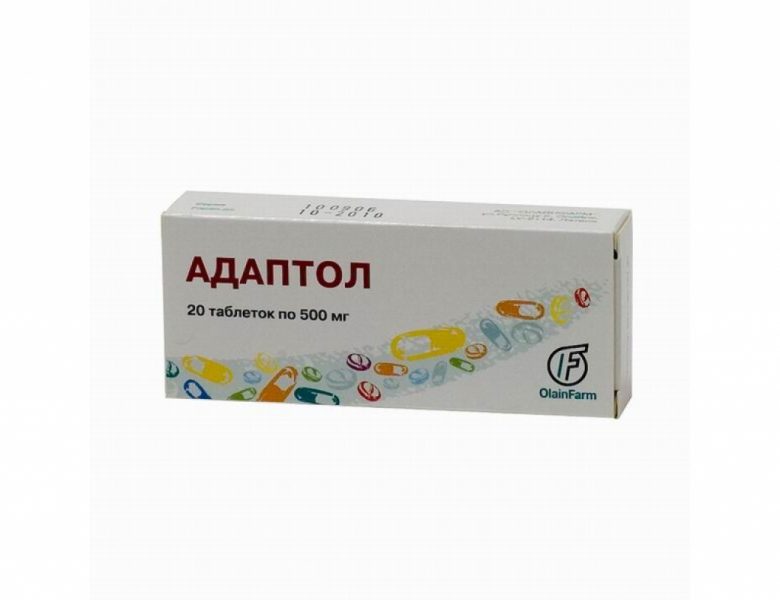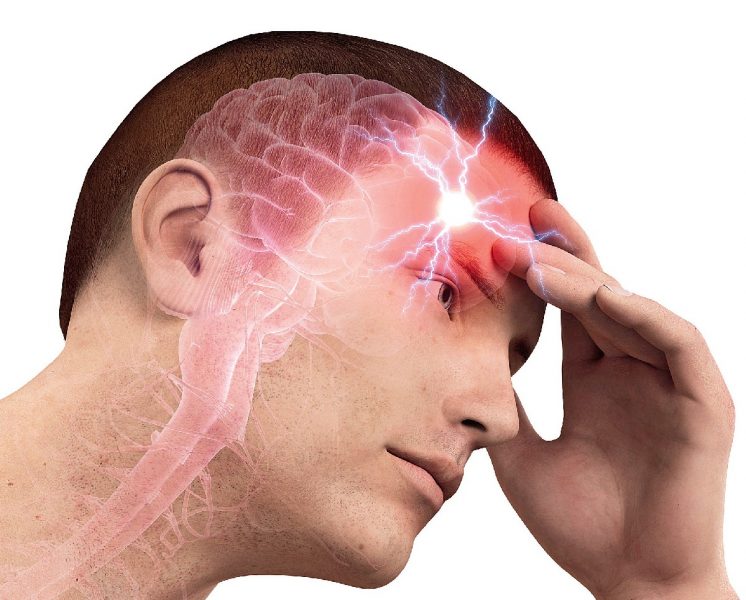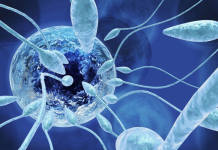Vegetovascular dystonia (VVD) is the most common diagnosis. 25-30% of children and 70% of adults suffer from VSD. Today, the VSD is one of the urgent medical and social problems. Therefore, it is so important to understand what the VSD is, symptoms in adults, treatment and prospects.
Material Content:
Vegetative dystonia - what is it?
Modern doctors are actively "brushing off" the name - VVD. It is considered obsolete, since the term was used exclusively in the medicine of tsarist Russia and the USSR.
The name is absent in the ICD-10, since ICD is not an independent disease, but is a combination of a large number of symptoms due to various reasons.
To the credit of Russian medicine of the past and the century before last, it is worth saying that even then the doctors did not consider VVD as an independent disease. The lack of unanimity among researchers of this polyetiological disease is explained by the fact that doctors of different specialties treat physicians, therapists, neurologists, endocrinologists, cardiologists or psychiatrists.

The importance of studying the IRR is associated not only with the high prevalence of the disease, but also with the fact that the autonomic nervous system (ANS) plays a crucial role in controlling the physiology of the body:
- providing neurosomatic and neuroendocrine relationships;
- muscle activity and mental activity;
- maintaining the balance of the dynamic environment of the body;
- participation in the formation of a response to stressful factors.
In addition, the ANS is widely represented in the structure of most diseases of various etiologies.
Scientists cannot come to a common denominator on the question of whether the IRR is an independent nosological unit or precedes the pathologies of the vessels of the brain or heart.
To further confuse the reader, it should be mentioned that despite the absence of the term “vegetovascular dystonia” in the ICD-10, the corresponding pathology is encoded by the mental illness code F45.3: “Somatoform autonomic nervous system dysfunction”. But this encoding does not include all the symptoms and syndromes inherent in the IRR. If the symptom complex “does not fit” into the framework of this disease, then the Ministry of Health of the Russian Federation recommends using code R 45.8 “Other symptoms and signs related to the emotional state”. To understand what the IRR is - an existing, but not recognized diagnosis, you should study the symptoms and causes of the disease.
Common signs and causes of VSD in adults
To identify the causes of VSD, it is necessary to understand the mechanism of the autonomic nervous system (ANS). It is part of the human nervous system and is located along the main "support" of the body - the spine. Nerves go from the spinal cord to the internal organs that regulate their work. The ANS is divided into sympathetic (stimulating, inducing) and parasympathetic (relaxing) systems. In order for the organs to work in the correct mode, the ANS must activate and deactivate the functions in the "automatic" mode.

If any factors disrupt the coordination process, a “malfunction” occurs, symptoms appear corresponding to the pathology of the organ at the level of which the violation occurred. In this case, the body itself may not have structural changes.
Scientists claim that the cause of VVD is a violation of the hypothalamus - the part of the brain that connects the central and autonomic nervous system and regulates their activity.
The hypothalamus is responsible for:
- hunger;
- maintaining body temperature;
- behavioral reactions;
- sexual orientation;
- reaction to stress.
Allocating the corresponding hormones, the hypothalamus and the pituitary gland associated with it coordinate the work of all organs and systems. Violation of the structure and function of this main “switch” of unconscious reactions in the body leads to the manifestation of VVD.
The cause of the disruption of the functioning of the hypothalamus, and, therefore, the ANS are:
- psychological characteristics of personality:
- increased excitability;
- suspiciousness;
- phobias;
- egocentrism;
- selfishness;
- Lifestyle:
- lack of exercise - low mobility;
- bad habits - abuse of alcohol, smoking, psychotropic and narcotic substances;
- nature of work:
- high intensity;
- tension of attention;
- fast decision making;
- physical and mental stress:
- physical overstrain;
- stresses;
- attention deficit disorder;
- prolonged depression;
- increased requirements;
- physiological characteristics of the body, leading to excessive reactivity or functional insufficiency of the brain structures that regulate the work of the ANS:
- birth injuries;
- Anomalies of fetal development;
- hereditary predisposition;
- endogenous and exogenous factors:
- systemic and infectious diseases;
- diseases of the endocrine system;
- autoimmune processes;
- brain injuries;
- exposure to ionizing radiation;
- hormonal imbalance;
- social factors:
- financial instability;
- uncertainty about tomorrow;
- risk of job loss.
Enumerate the causes of the IRR can be infinite. Accordingly, the multifactorial effect causes an abundance and a variety of symptoms of vegetovascular dystonia.
Symptoms of vegetovascular dystonia
In one of the popular science publications, the candidate of medical sciences, neurologist Sergey Zaitsev most fully and in terms of systems described the symptoms that are most often noted during VSD:
- fatigue, a feeling of physical and mental exhaustion, drowsiness, sudden changes in mood, suspiciousness, fears, reduced ability to work, vascular reactions to changing weather;
- headache, impaired coordination of movements, nausea, severe sweating, dry mucous membranes of the mouth, loss of consciousness, tremors and cramps of the extremities, visual and auditory perception abnormalities;
- temperature aberrations (fever, chills, different temperatures in different parts of the body), sensations of trembling, “goosebumps” in the muscles, chest tightness, shortness of breath, temporary loss of skin sensitivity, muscle weakness;
- rapid heartbeat and pulse, pain, “squeezing” in the heart, “jumps” in blood pressure, local redness on the face and neck, cooling of limbs;
- pain, flatulence, "gurgling and transfusion in the abdomen, diarrhea, frequent and profuse urination.
All these symptoms manifest themselves against the backdrop of panic attacks, accompanied by increased anxiety, fears and phobias.
Diagnostics
Symptoms of vegetovascular dystonia are so diverse, and their severity varies in a wide range, which makes it difficult to establish an accurate diagnosis and develop an adequate treatment. To clarify the diagnosis, there are diagnostic criteria for VVD, which include the main and additional signs:
| the main | additional |
|---|---|
| pain in the region of the heart, not caused by organic changes, which is characteristic of the VSD | subjective complaints about the work of CVS - hypertension, arrhythmia, painful rapid (tachycardia) or slow (bradycardia) heartbeat |
| heart complaints and symptoms - hypertension, arrhythmia, painful heart rate (tachycardia) or slow (bradycardia) heartbeat | vegetative-vascular syndromes - migraine-like pains and muscle weakness, increased pain sensitivity, vegetative-vascular crises, febrile temperature |
| jumps in blood pressure and heart rate, manifested unexpectedly or in the form of an abnormal response to physical activity, stress, hyperventilation or vertical body position | psycho-emotional disorders - anxiety, irritability, fear of death from cardiac arrest, insomnia |
| ECG changes | asthenia - general weakness, shortness of breath, decreased performance |
| minor ECG changes | lack of pronounced structural changes in the heart and blood vessels, mental and neurological dysfunctions |
The diagnosis of SCD dystonia is established if the patient has two or more main symptoms and at least two additional signs.
To exclude diseases with similar symptoms:
- Ischemic heart disease;
- heart failure;
- hypertension
- thyrotoxicosis
and other systemic diseases, differential studies are prescribed, including brain EEG, ECG, and various functional tests.
Attacks of exacerbation of the IRR
A feature of the course of the IRR is the periodic appearance of vegetovascular paroxysms or crises. Attacks are observed in a significant number (68%) of patients with VVD.

Vegetative crises are divided into:
- “Panic attack” (sympathoadrenal crisis), which occurs against the background of psycho-emotional overstrain, overwork, weather changes, in women - before the onset of menstruation. The crisis is manifested:
- “Noise” in the head;
- "Fading" or increased heartbeat;
- migraine-like headache;
- depersonalization (a sense of "outside view");
- pallor of the skin;
- suffocate;
- tearfulness, depression;
- fear of impending death;
- hyperthermia;
- irregular blood pressure;
- increased blood glucose. The crisis, as a rule, lasts 1.5-2 hours, after which the patient has abundant and frequent urination, weakness, disorientation.
2.parasympathetic (vagoinsular) crisis is accompanied by:
- a decrease in the reaction rate;
- violations of the emotional-volitional sphere;
- severe dizziness;
- weakness
- profuse sweat;
- "Sinking" of the heartbeat;
- difficulty breathing;
- a feeling of “slipping” or “falling”;
- dyspeptic disorders ("bear disease");
- lowering blood pressure. The attack lasts 3-4 hours. After the crisis, weakness, sweating, pain in the region of the heart, dizziness, decreased performance, increased fatigue are noted.
3. mixed.
Depending on the severity of symptoms and the duration of the attack, crises during VVD are divided into:
- mild - the duration of the attack is not more than 10-15 minutes, usually one symptom is manifested;
- moderate - crisis lasts from 15-20 minutes to 1 hour. The patient feels several pronounced symptoms. Post-crisis asthenic state lasts for 1-1.5 days;
- severe - accompanied by severe violations of the autonomic system, convulsions, involuntary movements. It lasts more than an hour, and asthenia lasts up to several days.
Treatment of vegetovascular dystonia
In the treatment of VVD, preference is given to conservative non-drug methods and only with serious violations or ineffectiveness of the chosen methods, medications are prescribed.
Medications for adults
Patients with increased heart rate and arrhythmia are prescribed Corvalol, Bellaspon, Belloid. With severe psycho-emotional disorders, crises, it is recommended to take antipsychotics, antidepressants, tranquilizers. With strong fear, anxiety, tension appoint Seduxen, Relanium, Elenium, Tazepam, Frontin. During a crisis, drugs are administered intravenously. But they cause severe drowsiness, so in the daytime medications with moderate sedation are recommended - Adaptol, Tenoten, Phenibut, Amizol.

To eliminate pathological manifestations of the cardiovascular system, β-adrenergic blockers are used - Carvedilol, Concor, Metoprolol.

Pain in the heart, interruptions in his work relieve with the help of Verapamil or Diltiazem. To improve nutrition and strengthen the heart muscle, patients are prescribed vitamin preparations and products containing potassium and magnesium.
Methods of treatment with folk remedies
In addition to medications, phytopreparations and home-made decoctions, tinctures of medicinal plants are used in the treatment of VVD. Traditional healers recommend taking long-term (6-8 months) decoctions of herbs - calamus, butterbur, cap, garmala, sweet clover, oregano, lily of the valley, panzeria, passionflower, tartar. Decoctions of herbs are taken regularly, ½ cup 2 times a day.

In addition to herbs, traditional medicine recommends a natural biostimulant based on beeswax or wax moths.
Physiotherapy

An important component in the treatment of VVD is physiotherapy, which includes:
- massage;
- balneological procedures (baths, showers, hydromassage);
- reflexology;
- hyperbaric oxygenation;
- Exercise therapy.
With severe symptoms, electrophoresis with drugs is prescribed.
Phytotherapy for VSD
Most often, patients with VVD are prescribed soothing alcohol tinctures of valerian, peony, motherwort or hawthorn.

In addition, based on extracts of medicinal plants, pharmaceutical herbal preparations are made:
- from hawthorn - Aurocard, Cardiovalen, Novo-Passit, Kratal;
- from valerian - Valocormid, Valocordin, Zelenin drops;
- lily of the valley - Cardiovalen, Corvalol, Nervogran.
It is interesting: Zelenin drops
Phytopreparations with adaptogen properties are effectively used in the treatment of VSD. These are alcohol tinctures of safflower-like levzea, ginseng, eleutherococcus, Schisandra chinensis, and golden root (Rhodiola rosea).
Prevention of VVD: how to avoid crises

The basis for the prevention of VSD is a healthy lifestyle, which implies:
- rejection of bad habits;
- outdoor activities and sports;
- timely treatment of systemic diseases and focal infections;
- healthy psychological climate in the family;
- hormonal correction;
- avoidance of stress and traumatic situations.
It is impossible to neglect the treatment of VVD, since a pathological condition can lead to serious complications, structural disorders of the organs or mental illness.












